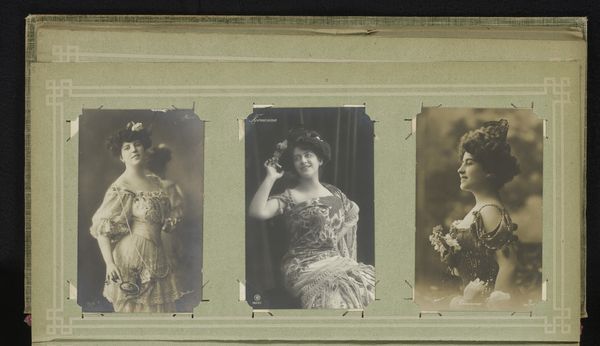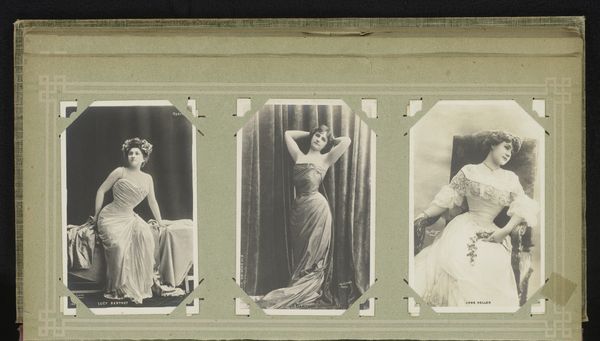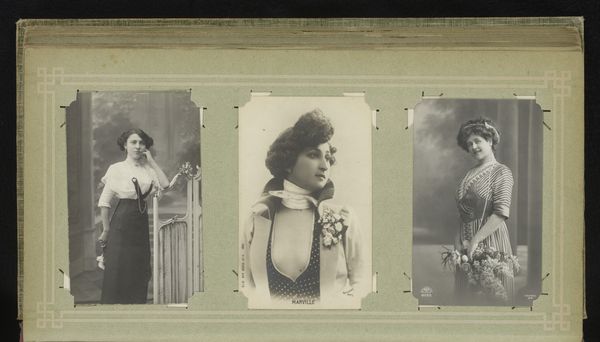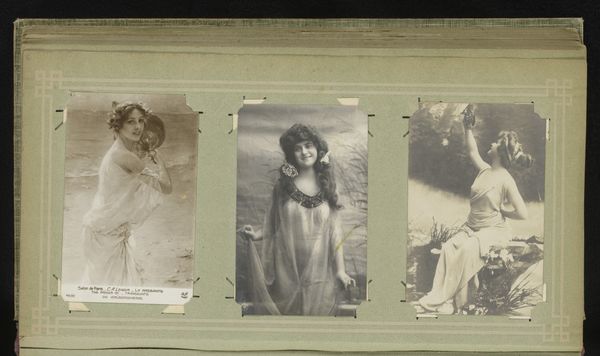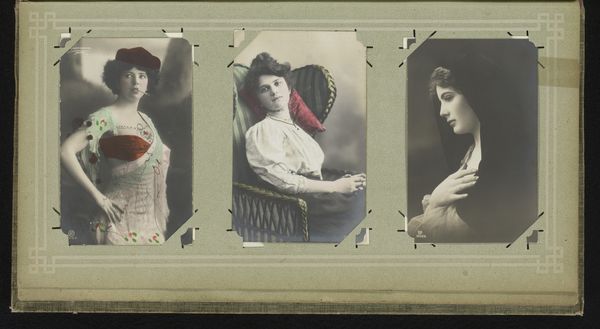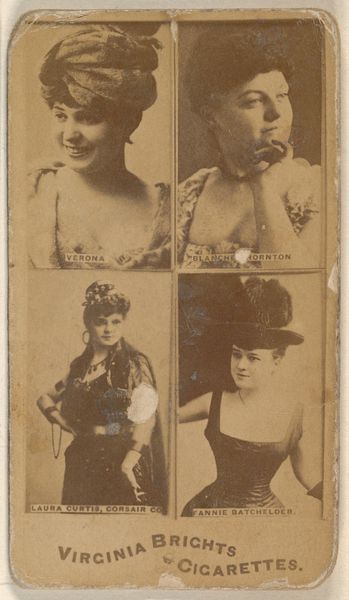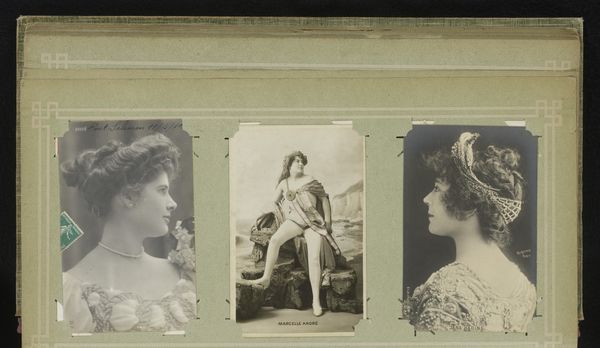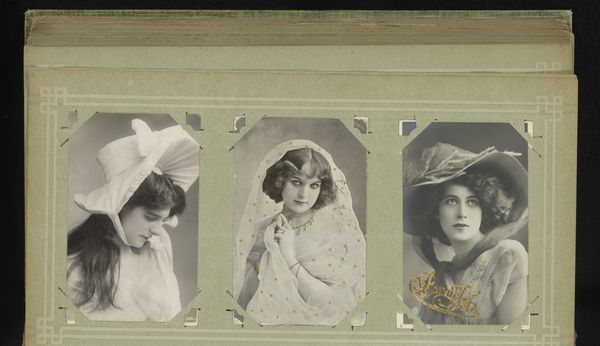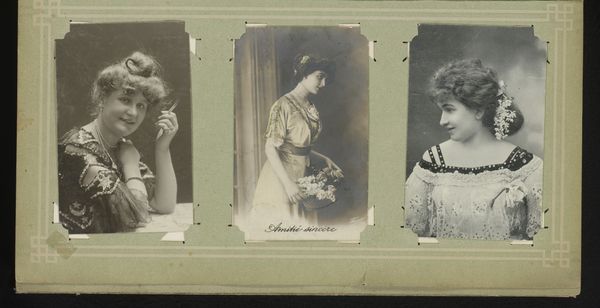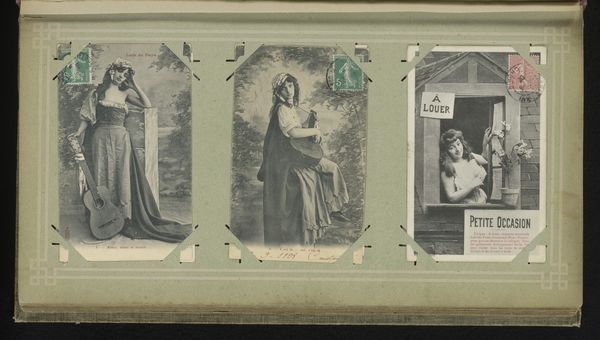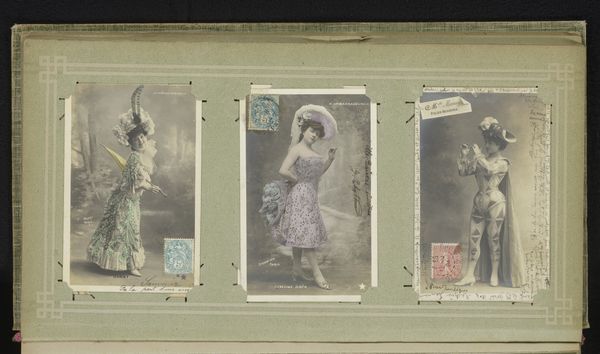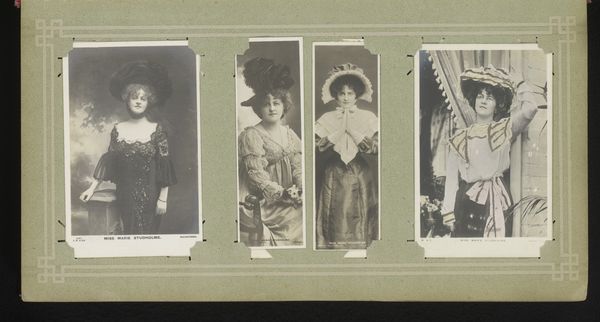
photography
#
portrait
#
art-nouveau
#
photography
Dimensions: height 196 mm, width 368 mm
Copyright: Rijks Museum: Open Domain
Editor: This is "Drie portretten van Lina Cavalieri" or "Three portraits of Lina Cavalieri" by Ch. Reutlinger, probably taken sometime between 1900 and 1930. It's a photographic triptych, beautifully framed with Art Nouveau sensibilities. What really strikes me is how staged they all seem – almost like she's performing a role. What do you make of it? Curator: That's a perceptive observation. I agree they appear very staged, and that's crucial to understanding their context. Consider the explosion of photographic portraiture during this period. Photography democratized image-making but it also created new anxieties. Did these portraits serve to solidify Lina Cavalieri's image, carefully constructing a public persona? Editor: That makes sense. It’s like she’s curating herself! Are there any particular visual cues in these portraits that tell us about her social standing or how she wanted to be seen? Curator: Absolutely. Think about the dresses, the backgrounds – they're all carefully chosen to convey status and elegance. In the leftmost portrait, she stands amongst painted flora, linking her to natural beauty, a familiar romantic trope of that era. In the centre, she appears dreamily looking into the skies, evoking a sense of sensitivity, and then finally a more theatrical representation. The feather and heavy fabric contribute to a vision of stardom and constructed celebrity. The museum would probably consider this entire piece as a trace of public-facing performance of fame, carefully packaged for distribution. Do you think they succeeded? Editor: I think so. I mean, here we are, over a century later, still talking about it! Curator: Exactly. And that enduring fascination reveals the powerful influence these types of portraits exerted on shaping perceptions and reinforcing social ideals. A valuable reflection of how art creates cultural value, don't you think? Editor: I definitely do! It’s really fascinating to think about photography as a tool for constructing fame and disseminating images back then. It also makes me wonder who gets to do this image curation nowadays, in today's culture. Thanks for this perspective!
Comments
No comments
Be the first to comment and join the conversation on the ultimate creative platform.
